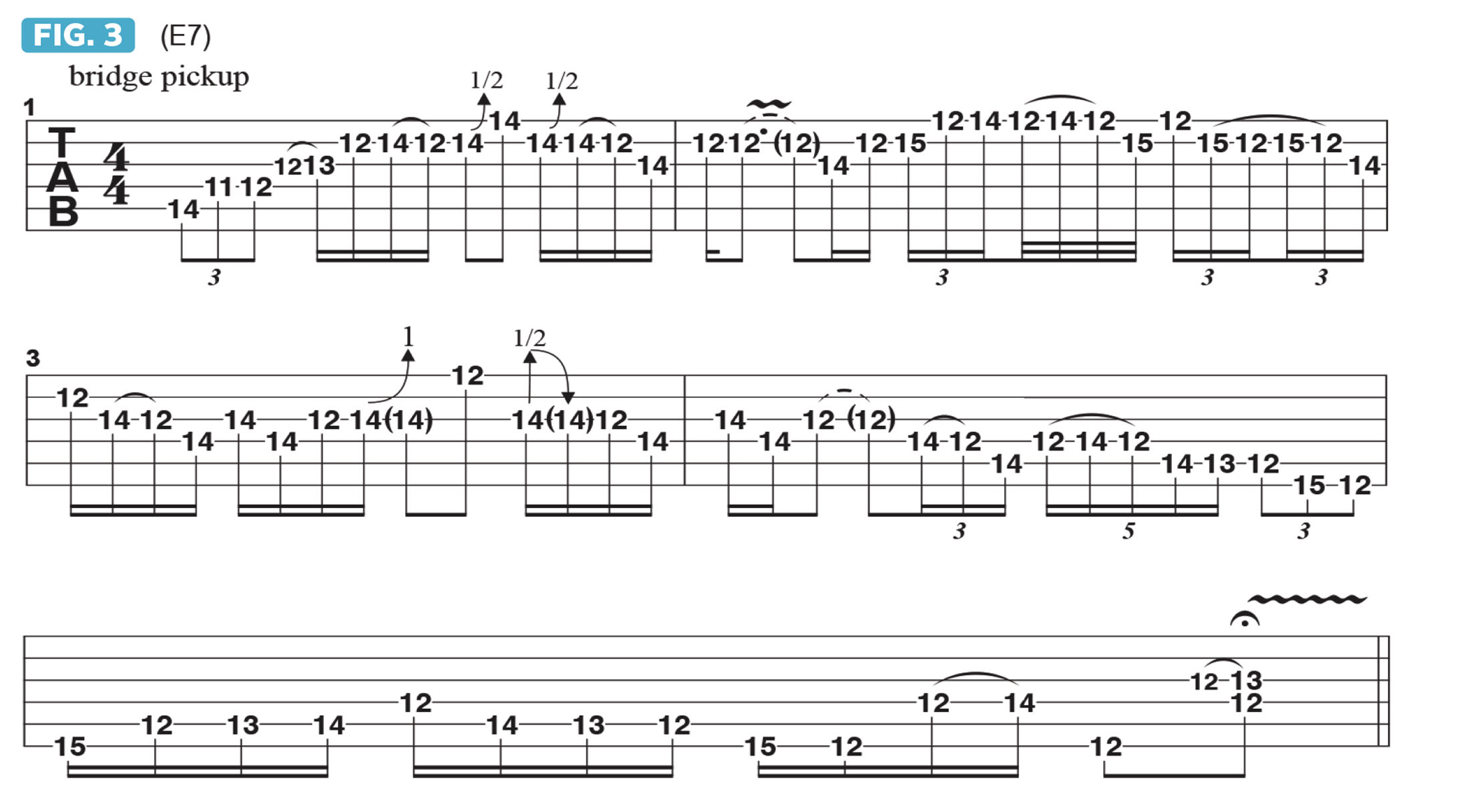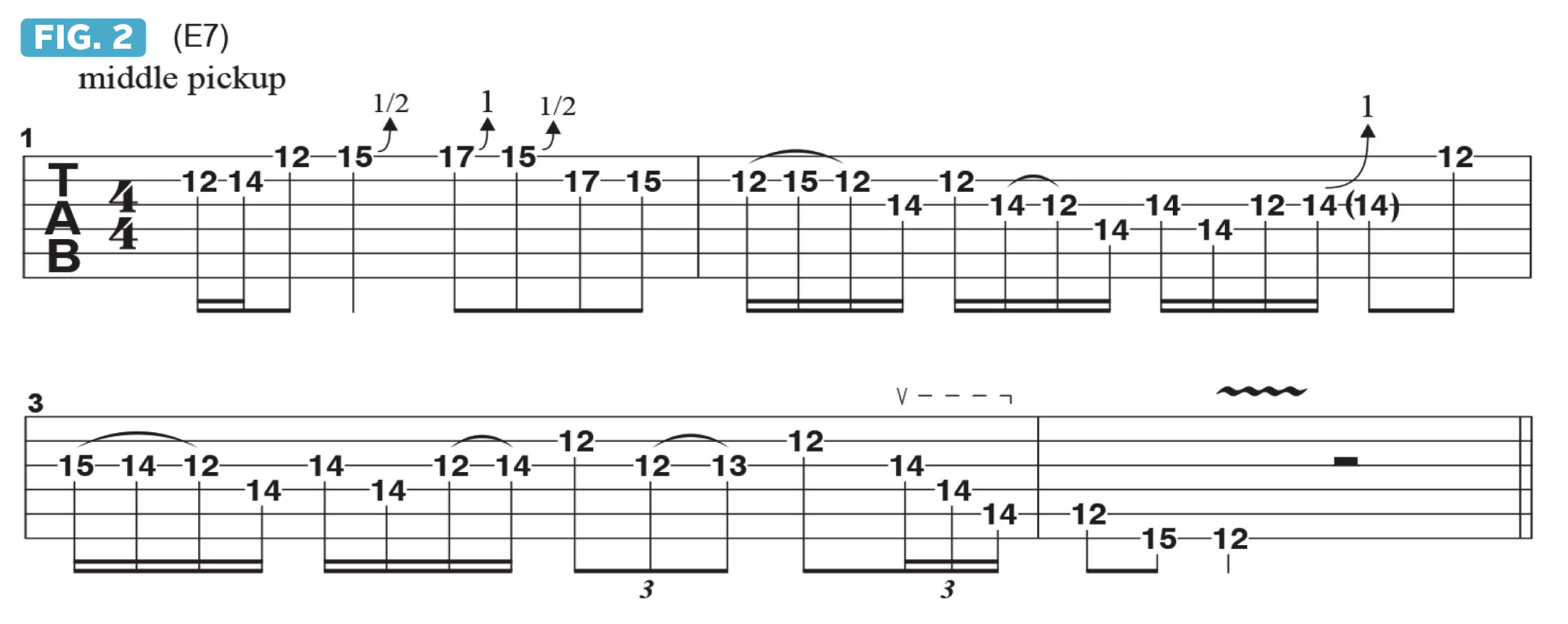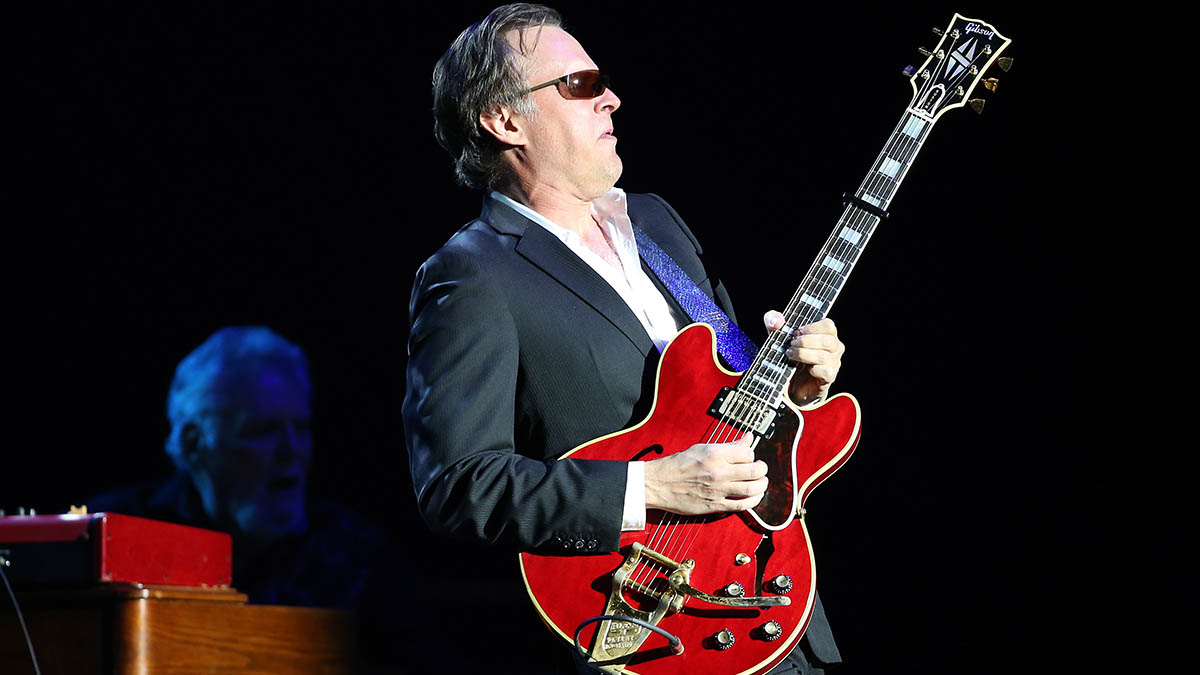What does the Varitone control on a Gibson guitar do? Let Joe Bonamassa show you in this lesson from the blues maestro
Joe Bonamassa invites you to get up close and personal with a super-rare 1959 Gibson ES-335 equipped with Varitone circuit – and learn some licks along the way
In this column, I’d like to feature a very rare guitar, a 1959 Gibson ES-335 fitted with a Varitone circuit. For those who missed the previous column, the Varitone is a multi-position tone control that offers six distinctly different EQ settings. It also puts the guitar in stereo, so one needs to use a stereo cable to access the instrument’s wide array of sound possibilities.
At the time, the Varitone circuit was standard on other Gibson semi-hollowbody guitars, like the ES-345 and ES-355, but it was almost never seen on an ES-335. Delineating factors between 1959 335s and 345s/355s are that 335s have rosewood fingerboards with dot inlays while 345s have split parallelogram inlays and 355s have block inlays on ebony fingerboards.
As this particular 335 has the Varitone circuit, it means it was custom-made, making it very rare. The guitar that B.B. King played on his legendary 1965 album Live at the Regal was also a rare Varitone-equipped ES-335.
That instrument was additionally fitted with a Bigsby tremolo bridge and finished in the very rare color of Argentine Grey. The way to determine this unusual color is that 335s painted in it are “sunbursted” on the sides, which is visible when looking at photos of B.B. with the guitar.
For the examples played in this column, I have the Varitone set in the #1 position, though, as I stated last time, B.B.’s Live at the Regal tone was achieved with the Varitone on the #2 setting.
Figure 1 is played with the toggle switch set to the neck pickup, and the tone is very fat and thick, with luscious low-end response while also providing plenty of high-end to cut through a mix.
These lines are played in 12th position and are based primarily on the E minor pentatonic scale (E, G, A, B, D), with inclusion of the major third, G#, as is often the case in blues solos (think B.B., Freddie King, Albert King, Buddy Guy, T-Bone Walker, etc.). This particular guitar is strung with flatwound strings, so even though bending the G string is more of a challenge, to me, it’s a real party to play!
All the latest guitar news, interviews, lessons, reviews, deals and more, direct to your inbox!
In Figure 2, I switch to the middle pickup selector position and play similar lines, but here I also incorporate the major sixth of E, C#, which makes reference to the E major pentatonic scale (E, F#, G#, B, C#).
Bar 3 begins with a hammer/pull on the G string, which is a very comfortable way to play this type of line on flatwound strings. Heading into bar 4, I set up the end of the line with an upstroke rake across the G, D and A strings.

In Figure 3, I switch to the bridge pickup, and though the sound is brighter, as expected, the guitar's semi-hollow body provides tons of low-end oomph. Once again, I incorporate the major sixth, C#, within lines based primarily on E minor pentatonic.
When it comes to playing classic blues, a 1959 335 is hard to beat. To me, it’s the perfect blues machine.
Joe Bonamassa is one of the world’s most popular and successful blues-rock guitarists – not to mention a top producer and de facto ambassador of the blues (and of the guitar in general).



